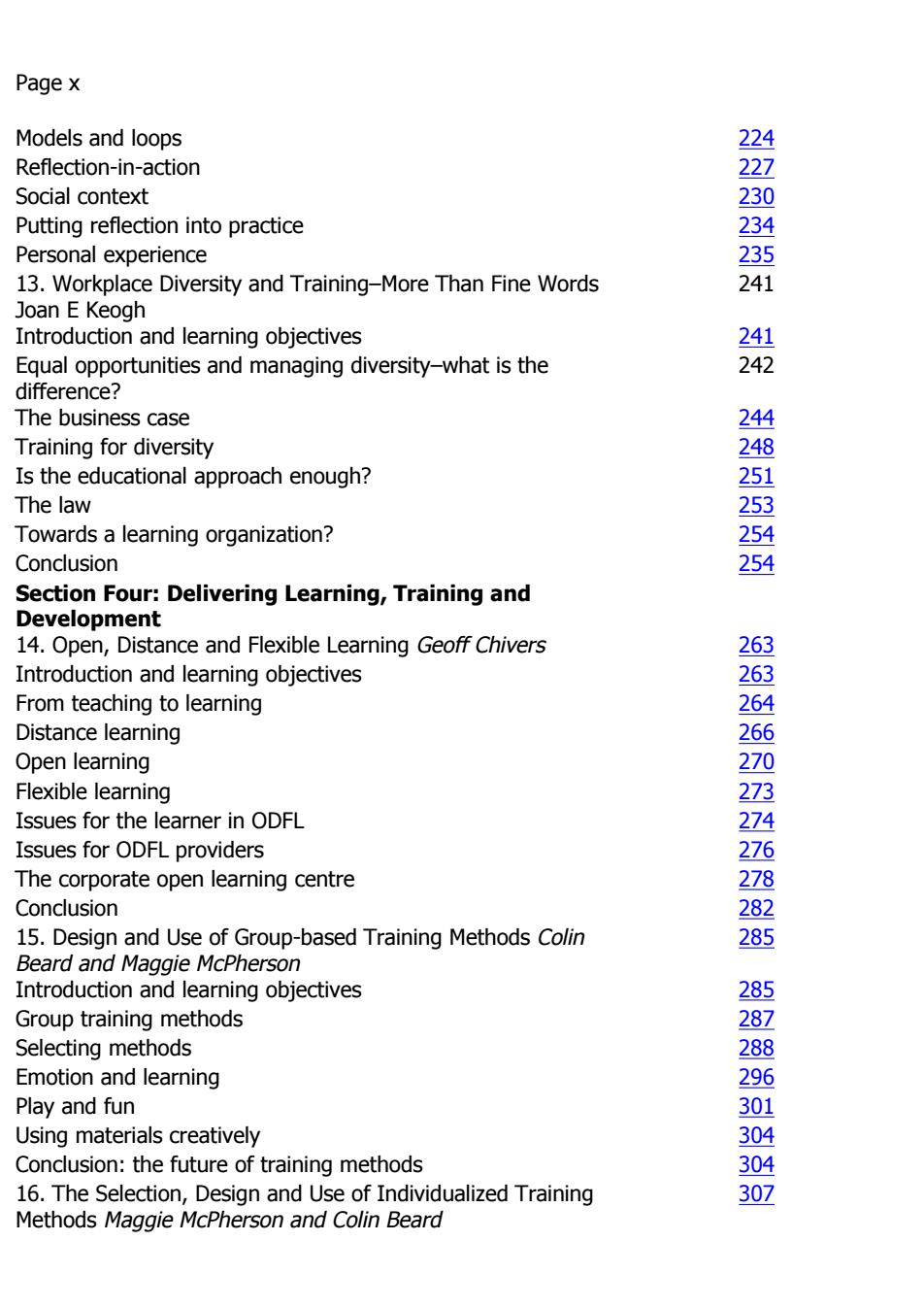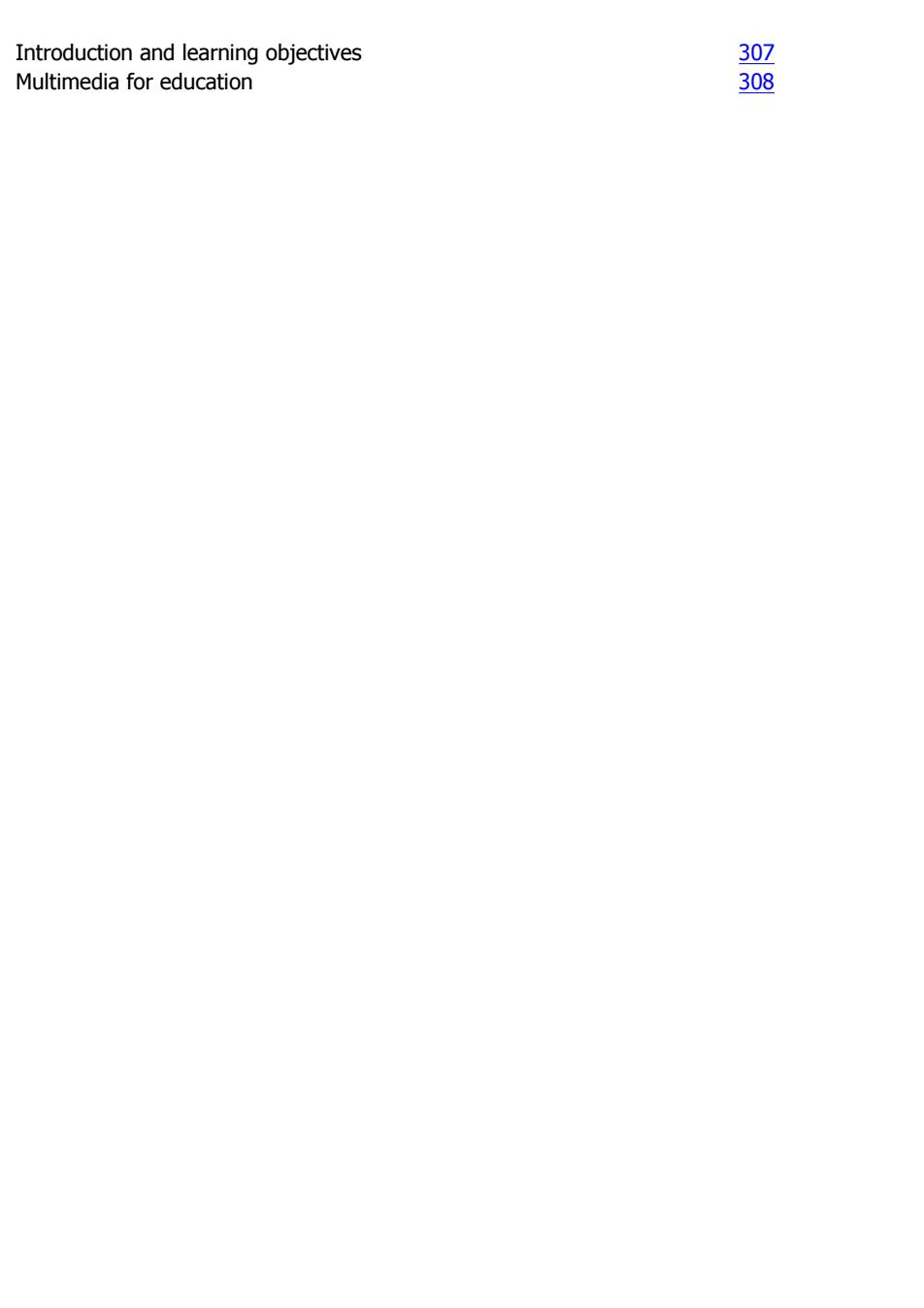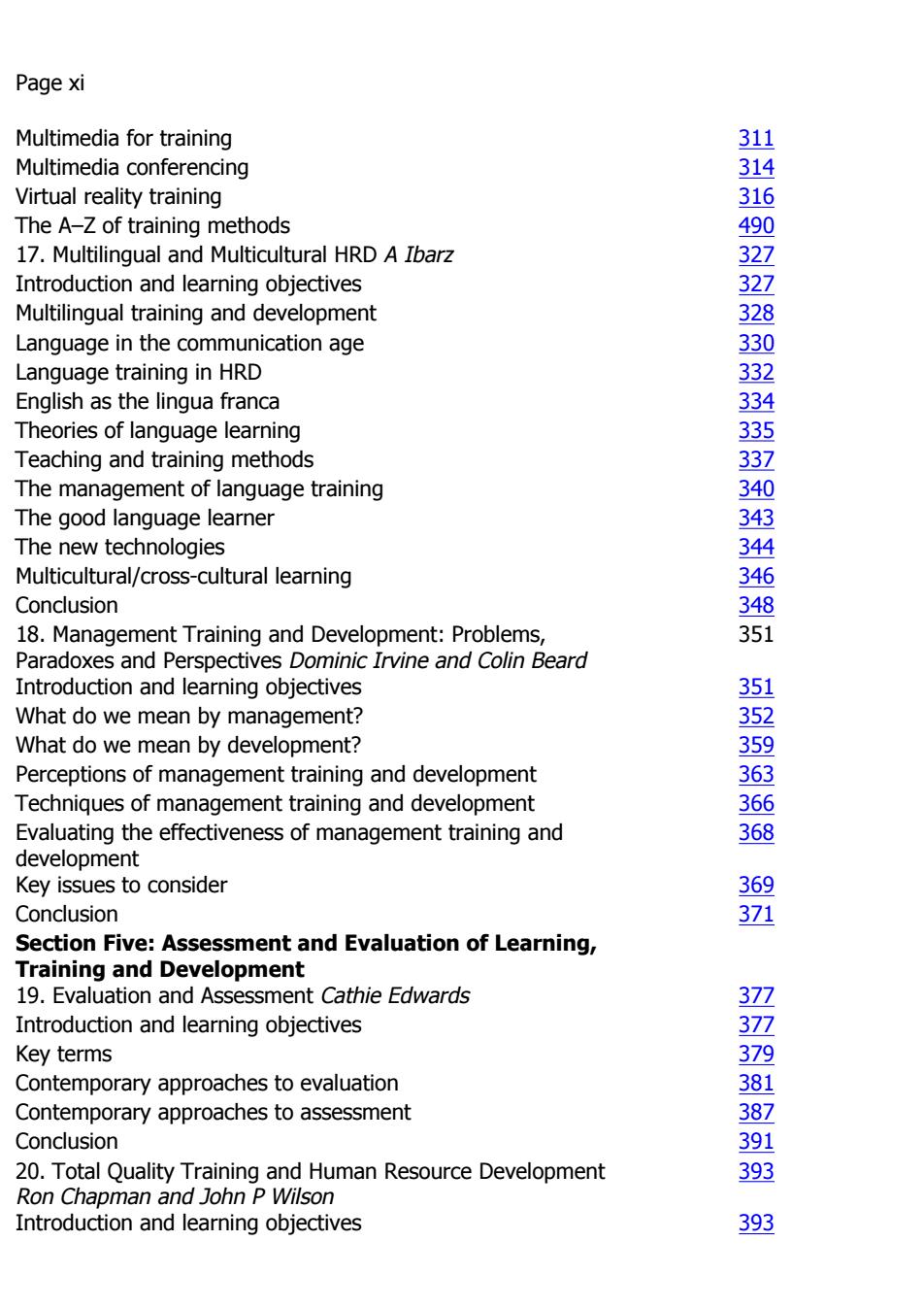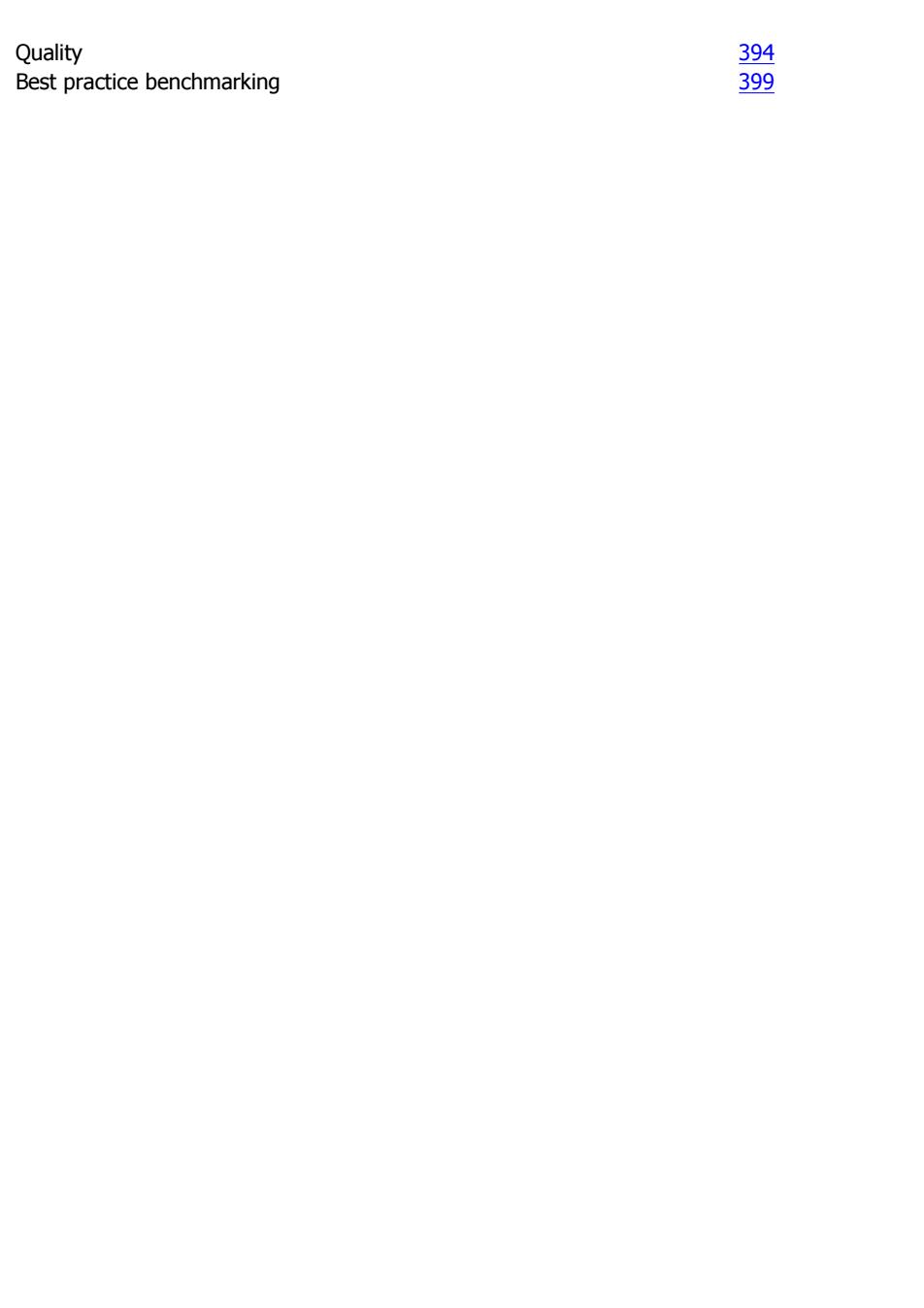
The reflective practitioner:Donald SchOn 223
The reflective practitioner: Donald SchÖn 223

Page x Models and loops Reflection-in-action Social context Putting reflection into practice Personal experience 13.Workplace Diversity and Training-More Than Fine Words Joan E Keogh Introduction and learning objectives Equal opportunities and managing diversity-what is the 20 difference? The business case 244 Training for diversity Is the educational approach enough? The law Towards a learning organization? Conclusion Section Four:Delivering Learning,Training and Development 14.Open,Distance and Flexible Learning Geoff Chivers Introduction and learning objectives From teaching to learning Distance learning Open learning Flexible learning Issues for the learner in ODFL Issues for ODFL providers The corporate open learning centre Conclusion 15.Design and Use of Group-based Training Methods Colin 285 Beard and Maggie McPherson Introduction and learning objectives Group training methods Selecting methods Emotion and learning Play and fun Using materials creatively Conclusion:the future of training methods 60s6eoew2sa2oaman&oaoaizadTang 302
Page x Models and loops 224 Reflection-in-action 227 Social context 230 Putting reflection into practice 234 Personal experience 235 13. Workplace Diversity and Training–More Than Fine Words Joan E Keogh 241 Introduction and learning objectives 241 Equal opportunities and managing diversity–what is the difference? 242 The business case 244 Training for diversity 248 Is the educational approach enough? 251 The law 253 Towards a learning organization? 254 Conclusion 254 Section Four: Delivering Learning, Training and Development 14. Open, Distance and Flexible Learning Geoff Chivers 263 Introduction and learning objectives 263 From teaching to learning 264 Distance learning 266 Open learning 270 Flexible learning 273 Issues for the learner in ODFL 274 Issues for ODFL providers 276 The corporate open learning centre 278 Conclusion 282 15. Design and Use of Group-based Training Methods Colin Beard and Maggie McPherson 285 Introduction and learning objectives 285 Group training methods 287 Selecting methods 288 Emotion and learning 296 Play and fun 301 Using materials creatively 304 Conclusion: the future of training methods 304 16. The Selection, Design and Use of Individualized Training Methods Maggie McPherson and Colin Beard 307

Introduction and learning objectives 307 Multimedia for education 308
Introduction and learning objectives 307 Multimedia for education 308

Page xi Multimedia for training Multimedia conferencing Virtual reality training The A-Z of training methods 17.Multilingual and Multicultural HRD A Ibarz Introduction and learning objectives Multilingual training and development Language in the communication age Language training in HRD English as the lingua franca Theories of language learning Teaching and training methods The management of language training The good language learner The new technologies Multicultural/cross-cultural learning 146077803953094%05 Conclusion 18.Management Training and Development:Problems, Paradoxes and Perspectives Dominic Irvine and Colin Beard Introduction and learning objectives What do we mean by management? What do we mean by development? Perceptions of management training and development Techniques of management training and development Evaluating the effectiveness of management training and development Key issues to consider Conclusion 371 Section Five:Assessment and Evaluation of Learning, Training and Development 19.Evaluation and Assessment Cathie Edwards 37☑ Introduction and learning objectives Key terms Contemporary approaches to evaluation Contemporary approaches to assessment Conclusion 20.Total Quality Training and Human Resource Development 393 Ron Chapman and John P Wilson Introduction and learning objectives 393
Page xi Multimedia for training 311 Multimedia conferencing 314 Virtual reality training 316 The A–Z of training methods 490 17. Multilingual and Multicultural HRD A Ibarz 327 Introduction and learning objectives 327 Multilingual training and development 328 Language in the communication age 330 Language training in HRD 332 English as the lingua franca 334 Theories of language learning 335 Teaching and training methods 337 The management of language training 340 The good language learner 343 The new technologies 344 Multicultural/cross-cultural learning 346 Conclusion 348 18. Management Training and Development: Problems, Paradoxes and Perspectives Dominic Irvine and Colin Beard 351 Introduction and learning objectives 351 What do we mean by management? 352 What do we mean by development? 359 Perceptions of management training and development 363 Techniques of management training and development 366 Evaluating the effectiveness of management training and development 368 Key issues to consider 369 Conclusion 371 Section Five: Assessment and Evaluation of Learning, Training and Development 19. Evaluation and Assessment Cathie Edwards 377 Introduction and learning objectives 377 Key terms 379 Contemporary approaches to evaluation 381 Contemporary approaches to assessment 387 Conclusion 391 20. Total Quality Training and Human Resource Development Ron Chapman and John P Wilson 393 Introduction and learning objectives 393

Quality 394 Best practice benchmarking 399
Quality 394 Best practice benchmarking 399